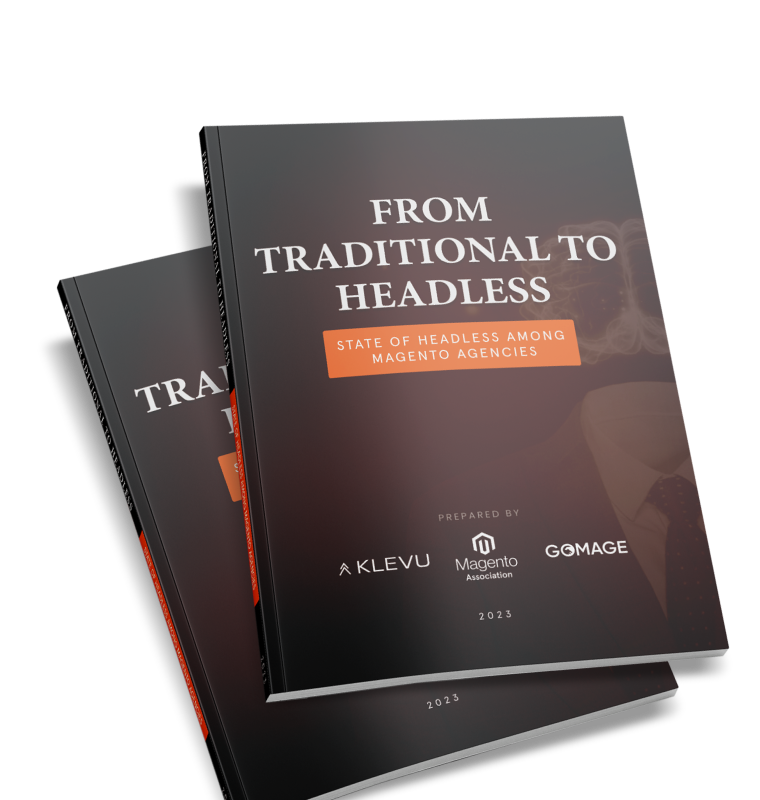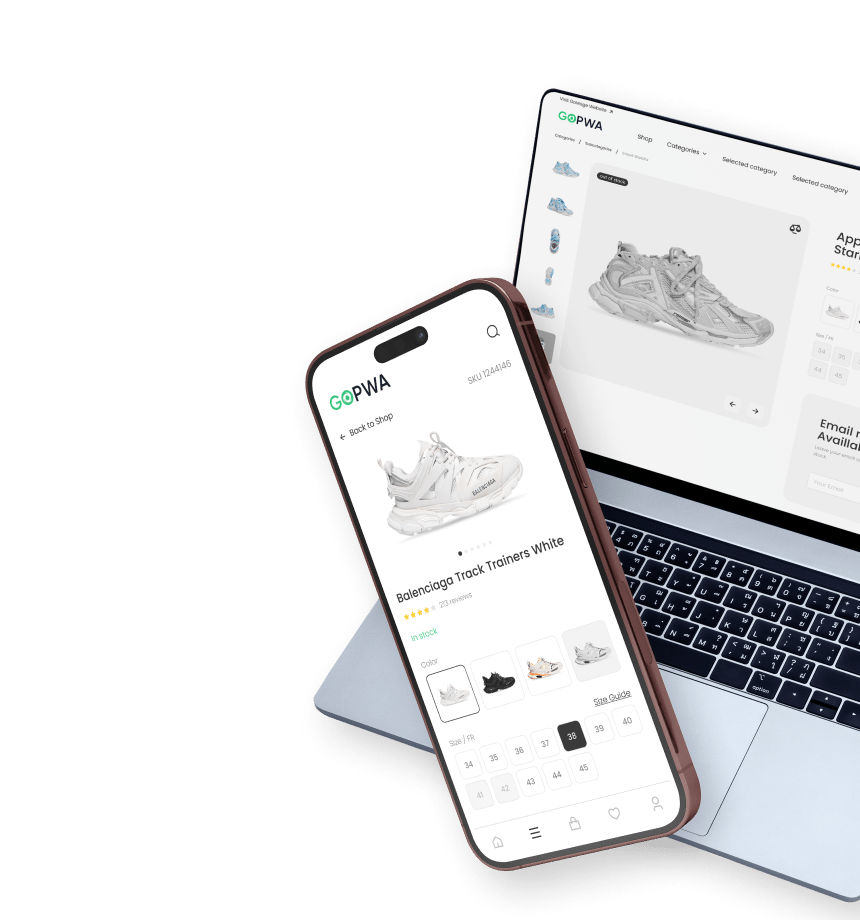When thinking about how to increase their revenue, many merchants consider attracting new customers as the number-one strategy. However, retaining existing customers is no less important. This is where eCommerce email marketing comes in.
According to Statista, brands generate $36 in revenue for every $1 invested in email marketing. Sounds astonishing, right? In today’s article, we’ll share the top 8 eCommerce email marketing strategies to heed in 2023 and beyond to increase your sales and revenue.
Let’s start.
What is eCommerce email marketing?
eCommerce email marketing refers to the practice of using email as a strategic tool to promote and drive sales for online businesses. It involves sending targeted and personalized emails to potential and existing customers with the primary objective of increasing engagement, building brand loyalty, and ultimately driving conversions and revenue.
eCommerce email marketing is a powerful tool to nurture relationships with customers, increase brand awareness, and boost sales by leveraging the direct and personal nature of email communication.
Benefits of eCommerce email marketing
Email marketing is valuable for eCommerce businesses as it provides numerous advantages that foster brand growth and enhance sales. Here are some key benefits of employing email marketing in eCommerce:
- Cultivate customer relationships
Email marketing serves as an excellent means to maintain communication with customers and nurture strong bonds over time. Consistently sending newsletters, updates, and relevant content to subscribers keeps the brand at the forefront of their minds, building trust and loyalty.
- Drive sales
Among the most effective methods to boost sales for eCommerce businesses is through email marketing. By delivering targeted promotions and product offers to the email list, it entices customers to make purchases, ultimately increasing revenue.
- Enhance customer engagement
Email marketing enables the creation of highly targeted campaigns designed to engage customers and encourage interactions with the brand. These may include personalized content, product recommendations, and interactive elements like surveys and quizzes.
- Reach a broader audience
As a cost-effective approach, email marketing facilitates reaching a large pool of potential customers. Building a well-targeted email list and crafting engaging campaigns attract new subscribers and extend the brand’s reach to fresh audiences.
- Measure success
The effectiveness of email marketing can be accurately measured through various metrics, such as open rates, click-through rates, and conversion rates. By utilizing these metrics, data-driven decisions can be made, continually improving the efficacy of email marketing endeavors.
Lean about the state of headless in eCommerce

Top 8 eCommerce email marketing strategies
Email marketing possesses significant potential for driving success in eCommerce ventures, yet its impact relies on a strategic and considerate approach. To optimize its effectiveness, here are key strategies to follow in 2023 and beyond for increased sales and revenue.
#1 Start a welcome email series
When a new shopper signs up for your eCommerce email marketing, it’s essential to leave a lasting impression to convert them into loyal customers. Instead of bombarding them with a single overwhelming welcome email packed with information, consider implementing a welcome email series.
A welcome email series offers a more effective approach to introduce your eCommerce brand, establish customer expectations, and highlight what sets you apart from competitors. By sending a sequence of well-crafted emails, you can consistently showcase your eCommerce brand, creating multiple positive interactions with new subscribers and fostering trust along the way.
A welcome series typically involves sending more than one email. The ideal number is usually two or three emails, as exceeding this may come across as “spammy” and potentially deter new subscribers. Sending two or three emails allows you to extend a warm welcome to the customer, encourage them to engage with your brand, and establish a more personal connection with the customer.
The first welcome email should encompass the following aspects:
- Express gratitude to the subscriber
- Extend a warm welcome to the brand
- Inform them about the exciting content they can anticipate in future emails
- If any promises were made during sign-up, such as a discount, be sure to include that as well
As for the second welcome email:
- Offer additional ways for subscribers to connect, such as through mobile apps or social media platforms
- Emphasize the value you or your products can bring to their lives
- Provide compelling reasons why they should consider making a purchase
#2 Leverage personalization
It’s possible that your target audience comprises multiple segments, as a product or service can appeal to various groups within the population. However, if you realize that delivering a single message to your entire audience is not feasible, that’s where personalization becomes crucial.
Implementing personalization can significantly enhance open rates, clicks, and engagement, while simultaneously reducing bounces, unsubscribes, and spam reports.
Tailoring your emails to cater to each audience segment is an excellent way to satisfy your subscribers, leading to increased likelihood of conversions. To incorporate this approach into your eCommerce email marketing strategy, begin by segmenting your list based on standard demographics like age, income, education, and, if relevant, gender identity.
However, there’s much more to explore. Delving into psychographics, which encompass values, personality, and interests, provides a deeper understanding of your subscribers and enables more effective communication with them. By leveraging segmentation based on demographics and psychographics, you can create a comprehensive and immensely valuable profile of your subscribers.
#3 Send Abandoned Cart emails
The average recorded rate of online shopping cart abandonment stands at 70.19%. That’s a huge number. By implementing an abandoned cart email series, you can gently encourage your shoppers to come back to your eCommerce store and finalize their purchase. Besides, using this strategy not only aids in potentially recovering lost revenue but also enhances the overall customer experience.
Web Design Create a visually captivating and highly functional online store that drives conversions and sets you apart from the competition.

#4 Set up Wishlist & Back in Stock emails
Creating a seamless and engaging shopping experience for your customers is essential for driving sales and building brand loyalty. Two powerful tools that can help you achieve this are Wishlist and Back in Stock emails. By implementing these strategies, you can keep your customers engaged, informed, and excited about your products.
A Wishlist is like a digital shopping cart where customers can save their favorite products for future reference. It allows customers to curate a personalized collection of items they desire, making it easier for them to return to their favorite products later.
Nothing is more disappointing for a customer than finding out their desired product is out of stock. However, Back in Stock emails can turn this situation into a sales opportunity.
Just a stat for you to consider if you still hesitate about crafting Back in Stock emails: 65.32% — that’s the open rate for Back in Stock emails. And it’s the highest rate compared to other post-purchase emails.
To maximize the impact and supercharge your customer engagement, consider combining Wishlists and Back in Stock emails. Here are two options to consider:
- Wishlist-based Back in Stock alerts
Allow customers to add out-of-stock items to their Wishlist and then set up automated Back in Stock alerts for those specific products. This seamless integration keeps customers informed and engaged throughout the entire process.
- Exclusive offers for wishlist subscribers
Reward your most loyal customers by offering exclusive discounts or early access to products when they subscribe to your Wishlist. This strategy incentivizes more customers to use the Wishlist feature and increases the likelihood of future purchases.
#5 Offer seasonal promotions
Seasonal promotions drive sales and customer engagement by leveraging holidays, events, and changing seasons. With urgency triggers and personalized offers, these campaigns capture consumers’ attention. Follow our tips for successful seasonal marketing:
- Capitalize on trends. Align promotions with holidays, events, and seasons that resonate with your audience.
- Create urgency. Offer limited-time deals and exclusive discounts to prompt quick action.
- Personalize offers. Tailor promotions based on customer preferences and purchase history.
- Use multi-channel marketing. Promote across social media, emails, websites, and physical displays.
- Reward loyalty. Offer exclusive perks to loyal customers to foster goodwill and repeat purchases.
- Introduce limited-edition items. Create scarcity with unique products or seasonal bundles.
Integrations Automate eCommerce processes with Magento integrations: ERP, CRM, analytics systems, payment gateways, marketing automation solutions and any other tool you need to sell more.

#6 Leverage automation
With all the strategies listed above, you must be thinking eCommerce email marketing is very time-consuming. Actually, it is, however if you use email marketing automation tools like Omnisend you will save yourself a considerable amount of time that could be invested in the actual running of your online store.
Besides saving time, you will also be able to scale your email marketing campaigns with ease as your eCommerce store grows without losing any relationships.
#7 Do split testing
eCommerce email split testing involves sending different versions of an email to separate groups of subscribers to determine which version yields the best results. These results are typically measured through metrics like open rate, click-through rate, and conversion rate. To effectively split test your eCommerce email campaigns, it’s essential to experiment with various elements such as subject lines, email length, layout, visuals, button colors, call to action, etc.
#8 Track your email marketing performance
To ensure the effectiveness of your email campaigns, tracking and analyzing your email marketing performance is crucial. Understanding key performance metrics allows you to make data-driven decisions, identify areas for improvement, and optimize your strategies:
- Open rates
The open rate measures the percentage of recipients who opened your email. A higher open rate indicates that your subject lines and sender name are appealing. To improve open rates, craft compelling subject lines and personalize emails to resonate with your audience. Tracking open rates over time helps identify trends and the effectiveness of your content.
- Click-Through Rates (CTR)
CTR indicates the percentage of recipients who clicked on links within your email. It assesses the engagement level with your content and call-to-action. To increase CTR, use clear and enticing call-to-action buttons and ensure your email content aligns with the expectations set by the subject line.
- Conversion rates
Conversion rate measures the percentage of recipients who completed a desired action, such as making a purchase or signing up for a webinar. By tracking conversion rates, you can determine the success of your email in driving meaningful actions. Optimize your emails to align with the intended goal and ensure a seamless user experience to boost conversion rates.
- Bounce rates
Bounce rates indicate the percentage of emails that were not delivered due to various reasons, such as invalid email addresses or full inboxes. A high bounce rate negatively impacts deliverability and sender reputation. Regularly clean your email list to reduce bounce rates and improve email deliverability.
- Unsubscribe rates
Unsubscribe rates represent the percentage of subscribers who opted out of receiving your emails. Monitor this metric closely to gauge audience satisfaction and the relevance of your content. Focus on delivering value, segmenting your lists, and respecting unsubscribe requests to maintain a healthy subscriber base.
- Measure ROI and Revenue attribution:
Calculate the return on investment (ROI) of your email marketing efforts by comparing the revenue generated from email campaigns to the associated costs. Additionally, use tracking links and UTM parameters to attribute revenue to specific email campaigns accurately.
Conclusions
Recognize that building your email list is the initial step, but maintaining engagement with your subscribers is the real challenge, yet it brings greater rewards. Neglecting to monitor your eCommerce email marketing efforts will prevent you from identifying areas for improvement and potentially miss out on valuable opportunities. Remember, you can’t enhance what you don’t measure. So try various eCommerce email marketing strategies and constantly track your performance.







